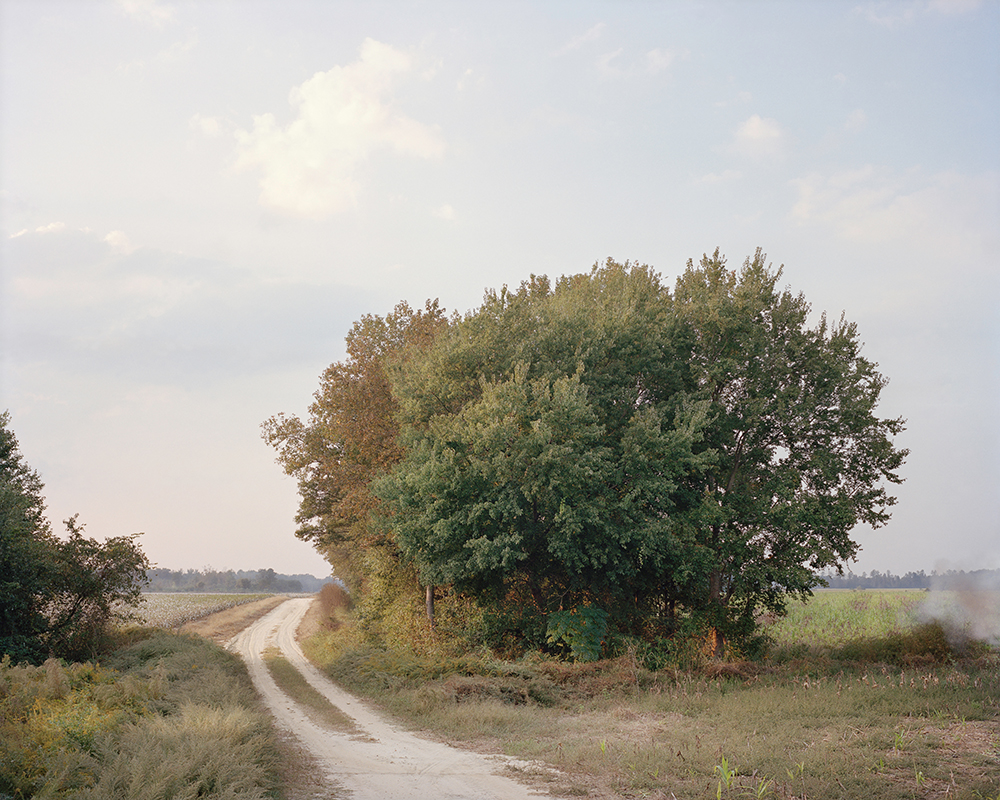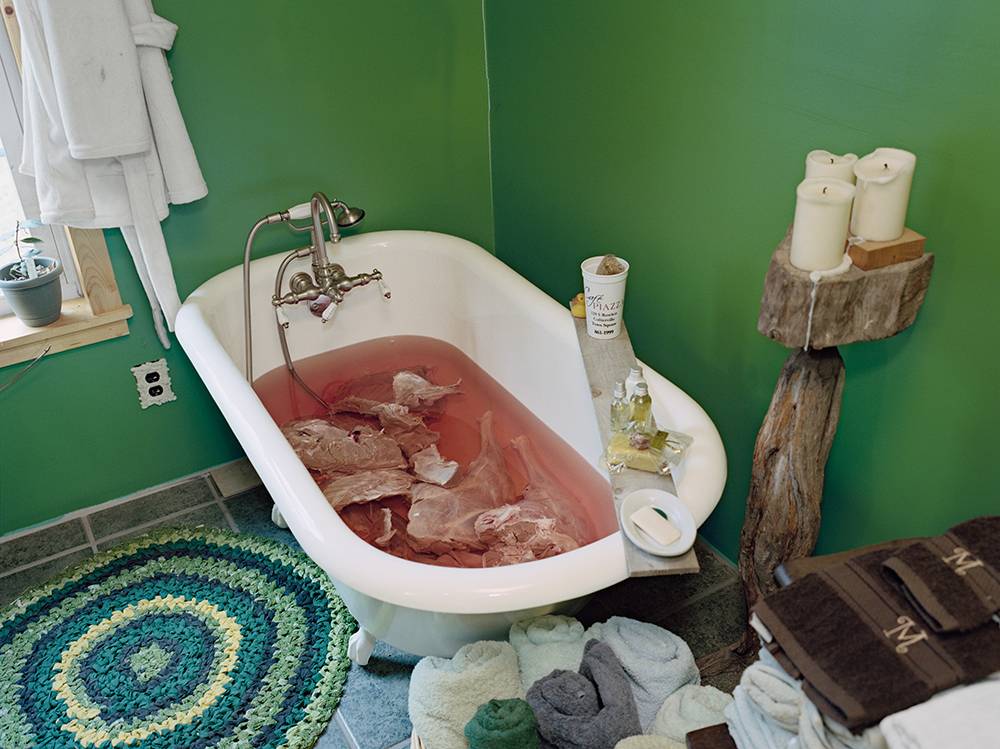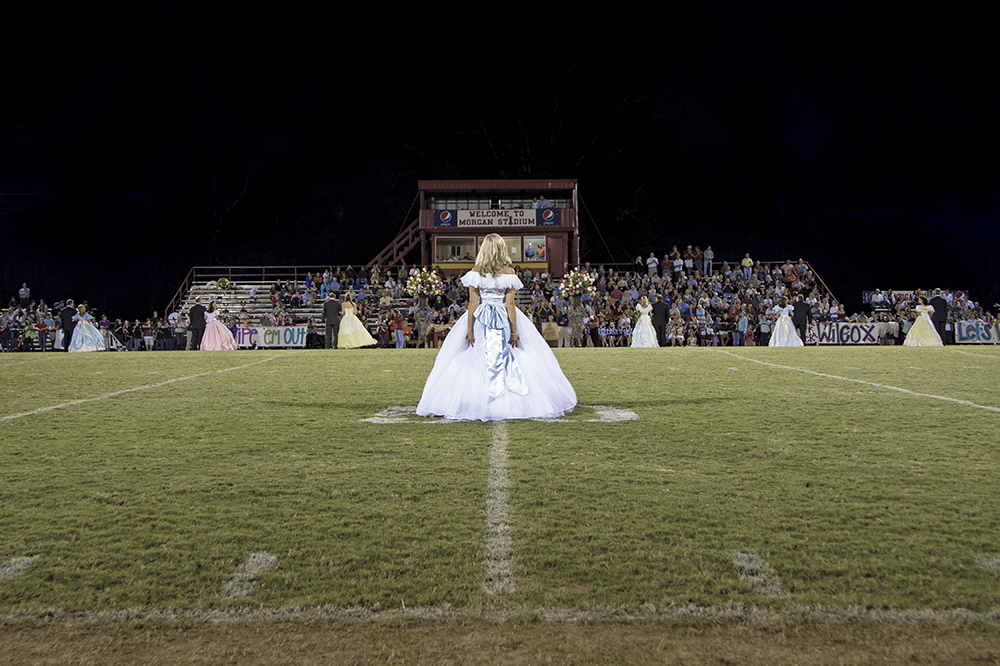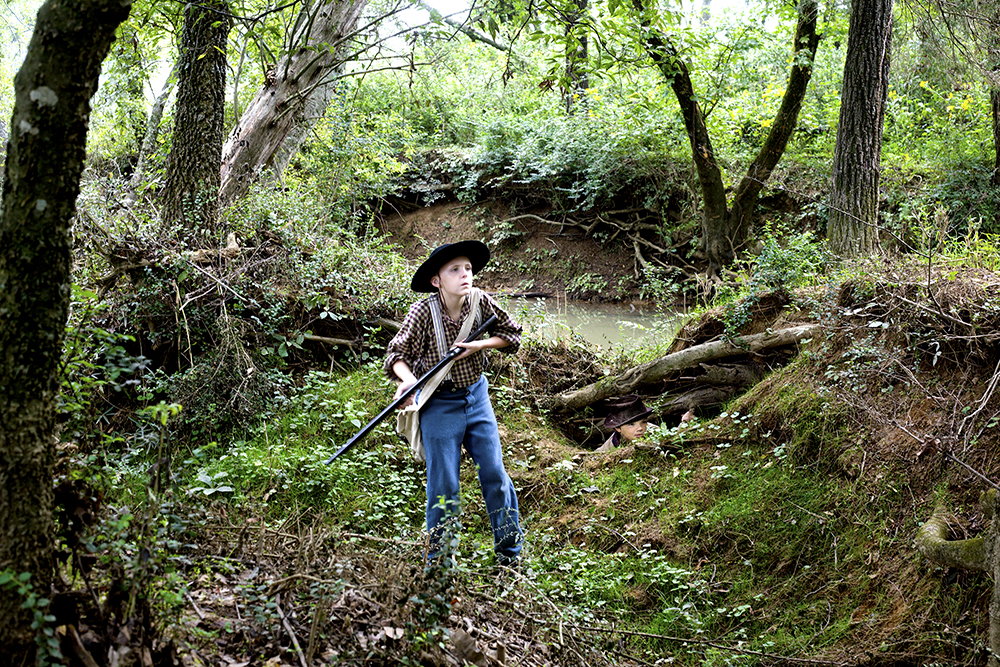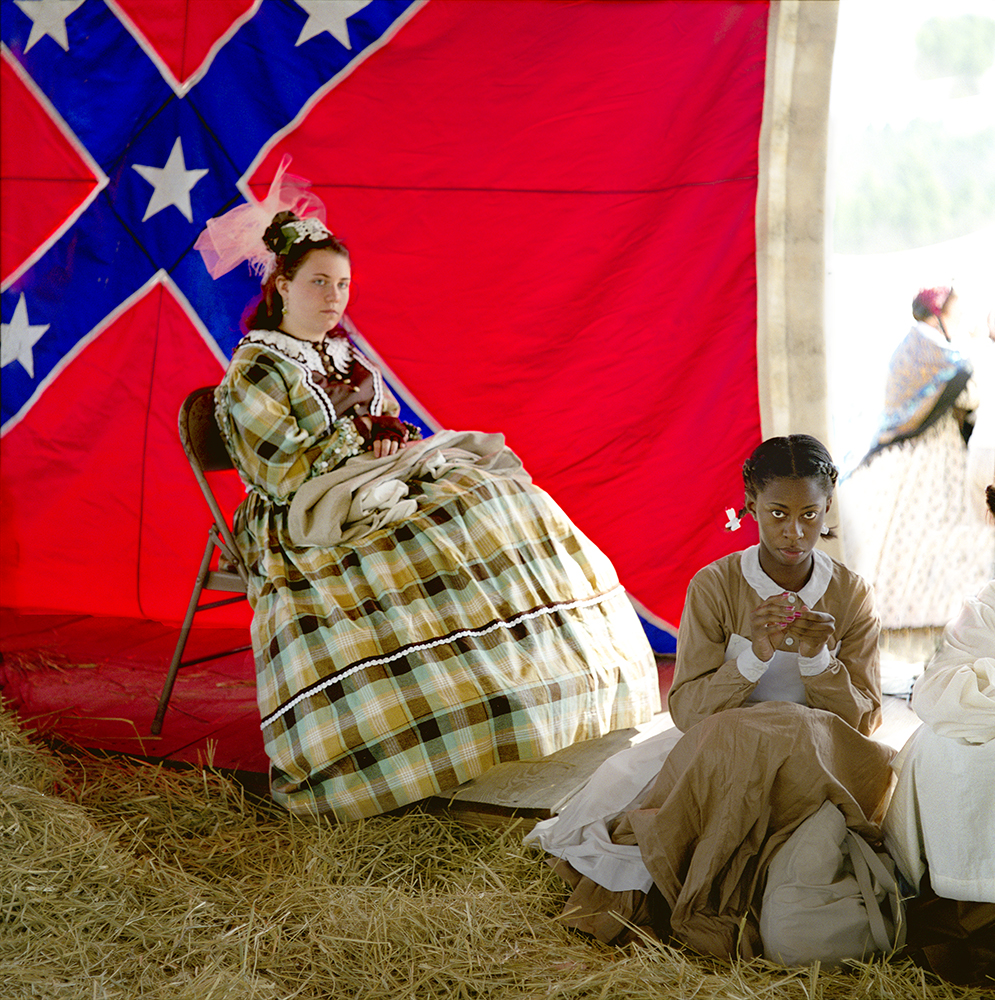Southbound: Photographs of and about the New South, Day 4
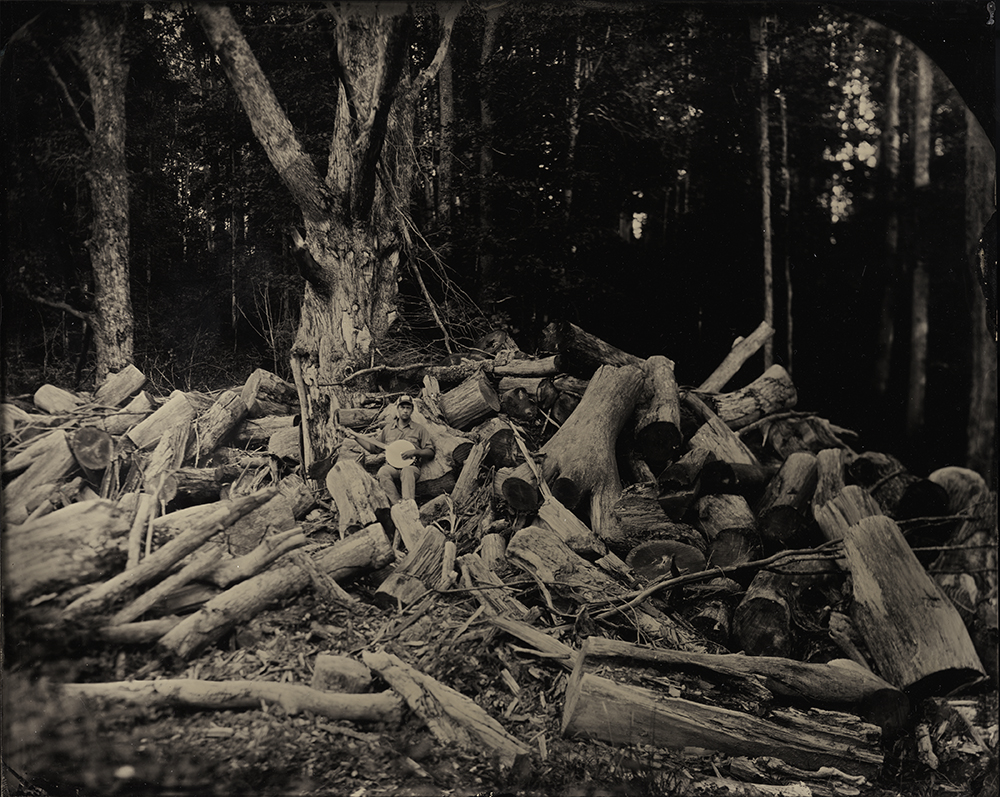
Janice Birchfield, 2013. From the American Folk series Roan Mountain, Tennessee. Tintype © Lisa Elmaleh
For the fourth day of our weeklong feature of images and text from Southbound: Photographs of and about the New South, the photographs are accompanied by an essay by historian, author, film-maker, and all around expert on the South, William Ferris.
William R. Ferris is a professor of history at UNC–Chapel Hill and an adjunct professor in the Curriculum in Folklore. He is associate director of the Center for the Study of the American South, and is widely recognized as a leader in Southern studies, African-American music and folklore. He is the former chairman of the National Endowment for the Humanities. Prior to his role at NEH, Ferris served as the founding director of the Center for the Study of Southern Culture at the University of Mississippi, where he was a faculty member for 18 years.
Ferris has written and edited 10 books and created 15 documentary films, most of which deal with African-American music and other folklore representing the Mississippi Delta. He co-edited the Pulitzer Prize nominee Encyclopedia of Southern Culture (UNC Press, 1989), which contains entries on every aspect of Southern culture and is widely recognized as a major reference work linking popular, folk, and academic cultures.
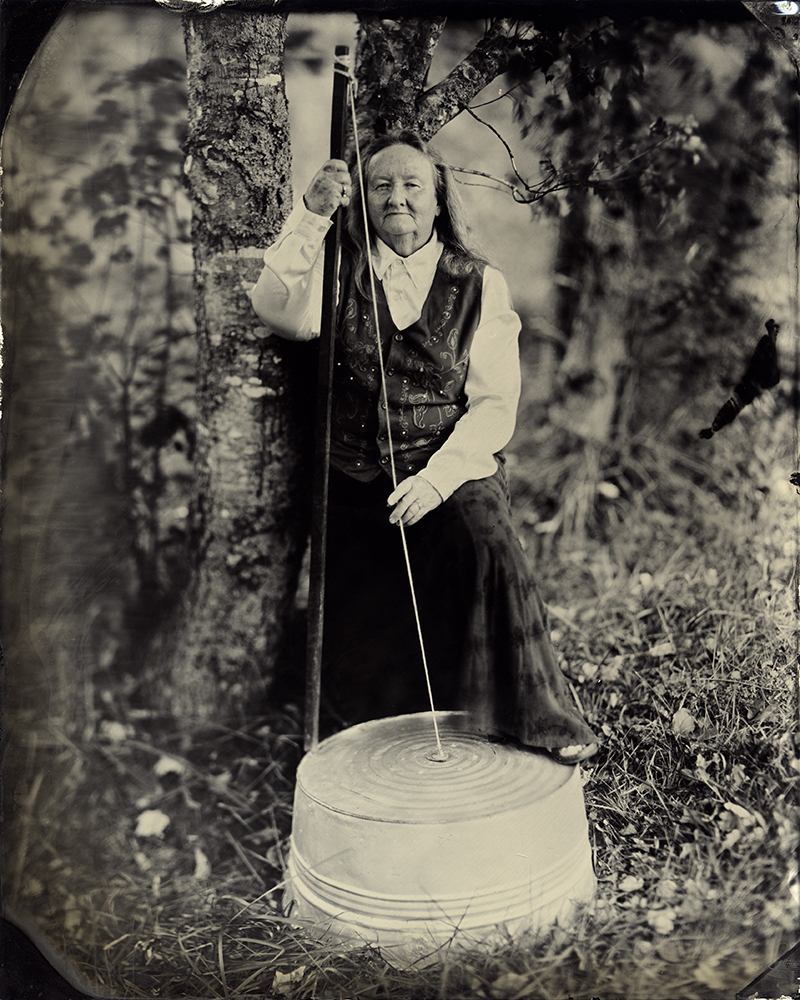
Andy Fitz Gibbon, 2014. From the American Folk series Montrose, West Virginia. Tintype © Lisa Elmaleh
Visions and Voices in the American South by William Ferris
Southerners are known for their attachment to place, and they share a deep love for the photograph, with its power to fix both space and time. A single image can transport its viewer to a place with timeless intimacy. It is as though that place and the people within it are just as they were the very second the shutter clicked. Photography, thus, resonates at every step when we explore the region.
The photographers featured in Southbound: Photographs of and about the New South inspire us to reflect on our region and remind us that the camera is a powerful tool to unravel the threads of history. The exhibition for which this book serves as catalogue also underscores the importance of photography as a link to modernism in the twentieth-century South. A growing number of institutions throughout the South now emphasize photography in their collections and programs.
Each photograph in this show captures a unique, distinctive world, and, together, Southbound’s collective images offer a kaleidoscopic view of the region. The photographs are both serene and disturbing. They take us places hitherto unseen and beckon us into a New South that is indeed unclothed, naked to the eye of the beholder.
The images capture the American South at a moment in time that the curators suggest is distinctive by their use of the term New South. Coined by Henry Grady, that phrase, ironically, is by no means new. In his speech to the New England Club in New York in 1886, Grady proclaimed “The new South presents a perfect democracy…. Her soul is stirred with the breath of a new life.”[i] Since Grady, each successive generation of Southerners has argued that they speak for the New South because they perceive their world as different from that of their ancestors.
[i] Henry Grady, Speech to the New England Club in New York (1886), reprinted in Paul D. Escott and David R. Goldfield, Major Problems in the History of the American South, Vol. II, The New South (Lexington, Mass: D.C. Heath and Company, 1990), 71–73.
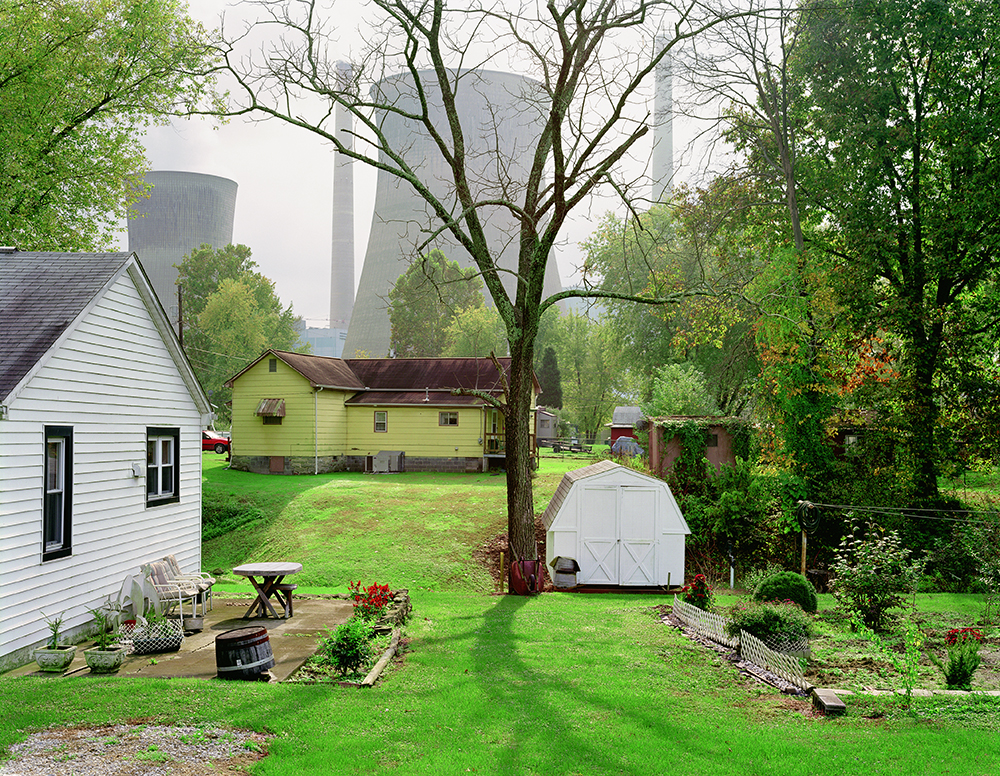
Amos Coal Power Plant, Raymond City, West Virginia, 2004. From the American Power series Raymond City, West Virginia © Mitch Epstein

Poca High School and Amos Coal Power Plant, West Virginia, 2004. From the American Power series Poca, West Virginia © Mitch Epstein
The photographs in Southbound remind us of William Faulkner’s oft-quoted remark that “in the South, the past is never dead. It is not even past.”[i] As the past at once defines the present and pushes us toward the future, each generation struggles to discover its own understanding of the region. The fifty-six photographers included here chart the region’s landscape with special skill. For the exhibition, each photographer is represented by four images; in the catalogue, five; and on the Southbound website, ten—from their quivers of thousands, and their collective images reveal the contemporary New South with special power.
The Southbound project reminds us that the region has inspired a rich body of photography in the twentieth century, as seen in the work of artists as diverse as William Christenberry, William Eggleston, Walker Evans, Sally Mann, and Carrie Mae Weems, as well as in photographs of family and friends that adorn the walls of our own homes.
We should also reflect on the important tie between photographers and writers in the South. Both groups document the landscape, built spaces, and people of the region. The porous membrane that separates literature and photography allows ideas to flow easily back and forth between their respective worlds.
[i] William Faulkner, Requiem for a Nun (London: Chatto and Windus, 1953), 85.
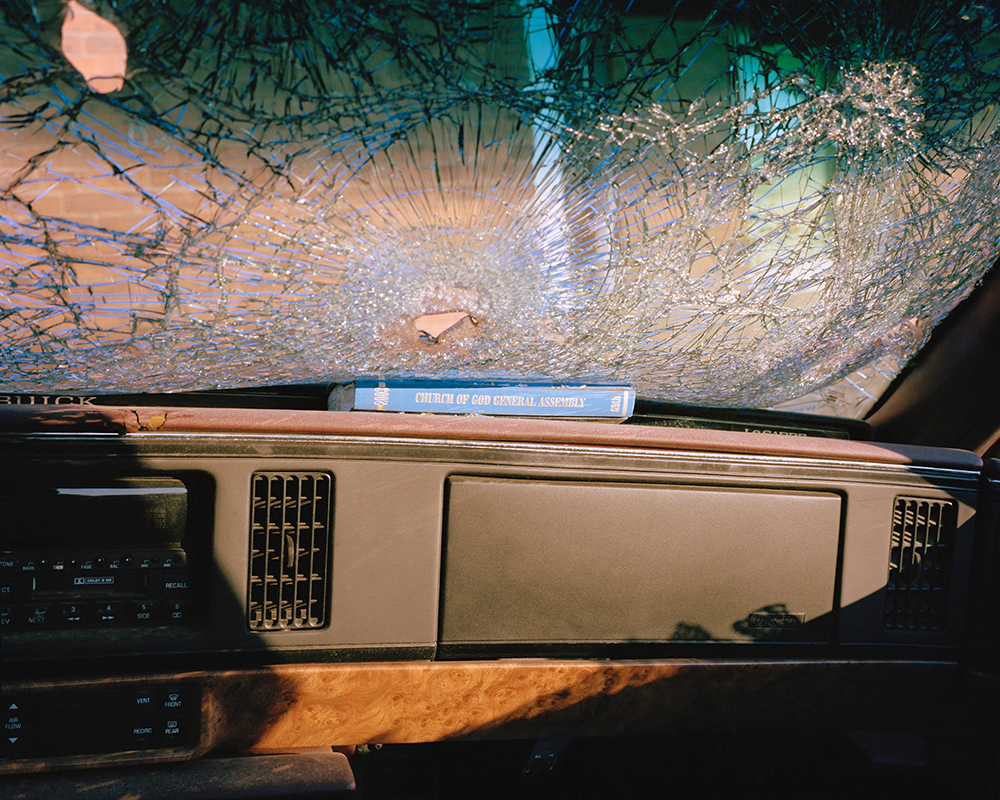
Cotton Harvest, 2010. From the Confessions for a Son series Laurinburg, North Carolina © McNair Evans
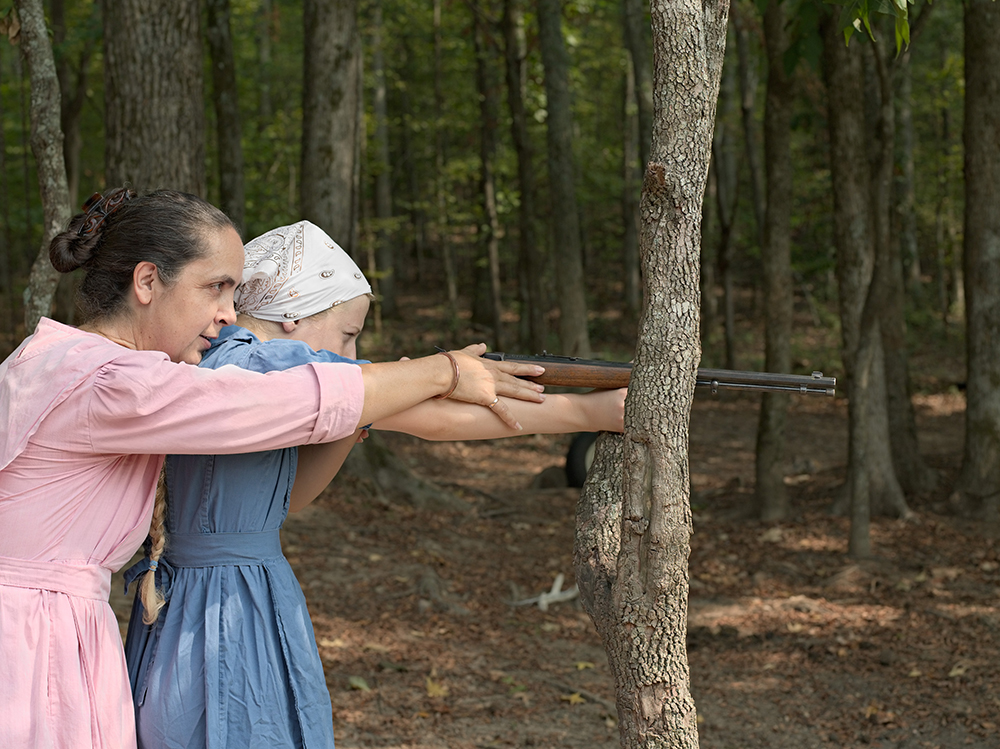
Rita and Cora Aiming, 2007. From the A Natural Order series. Tennessee © Lucas Foglia
William Faulkner took many photographs of his family and friends in Oxford, Mississippi, yet he never considered photography as a career. Eudora Welty, however, saw herself as a professional photographer, and she took more than a thousand photographs while employed by the Works Progress Administration. Eudora Welty: Photographs attests to the visual skills that strongly influenced her fiction.[i]
Welty acknowledged the influence that the photographs she took had on her writing, and she reflected that “nothing could have been written in the way of a story without such a background, without the knowledge and the experience that I got […] it provided the raw material […]. It was the reality that I used as a background and could draw on in various ways, even though indirectly.”[ii]
Eudora Welty and Richard Wright both photographed and wrote about their home state of Mississippi during the same period. Duke University English professor Richard Broadhead notes that, while both writers spent their formative years in Jackson and had parallel literary careers, they never met or corresponded during their lifetimes. Broadhead uses a photographic metaphor to suggest how deeply race divided both the personal and the literary worlds of Welty and Wright, who crafted images of themselves “so symmetrically opposed as to make them seem like each other’s photographic negative: Wright, so emphatically the author as black man, Welty no less unmistakably the writer as (white) lady.”[iii]
Like Welty and Wright, Ernest Gaines used his camera to capture the Louisiana worlds about which he writes. While living in San Francisco, Gaines brought his camera each time he returned home: “I always take a camera when I go back to Louisiana. I take both black-and-white and color photographs. […] I keep the photographs because most of these places are gone now. The stores are gone. The houses are gone […] you’ll never see these places ever again.”[iv]
[i] Eudora Welty, Eudora Welty: Photographs (Jackson: University Press of Mississippi, 1993).
[ii] William Ferris, “Eudora Welty,” in The Storied South: Voices of Writers and Artists (Chapel Hill: University of North Carolina Press, 2013), 33.
[iii] Richard H. Broadhead, “Two Writers’ Beginnings: Eudora Welty in the Neighborhood of Richard Wright,” Yale Review 84, no. 2 (April 1996), 2.
[iv] William Ferris, “Ernest Gaines,” in The Storied South, 46.
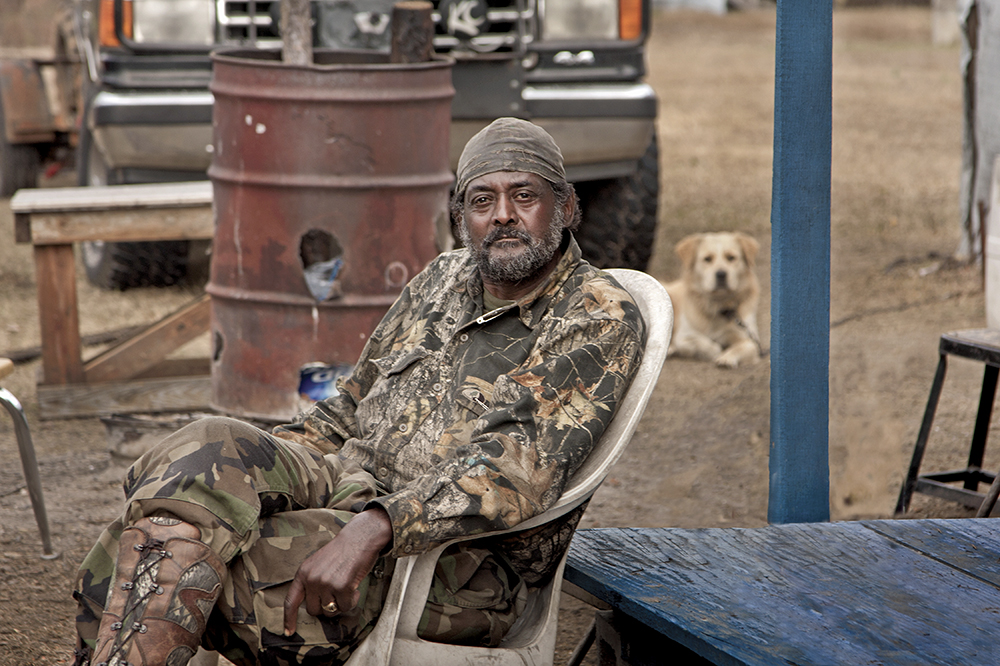
Hunter, Perry County, Alabama, 2010. From the Black Belt Color series. Perry County, Alabama © Jerry Siegel
Southern writers view photography as an important tool for their literary expression, whereas photographers approach their visual craft as a literary expression in and of itself. William Christenberry acknowledged that “Southern writing, and southern literature, has had a greater influence on my work than the work of other visual artists. […] Walker Percy […] has had a profound influence on what I try to express in my work. I don’t know if it’s possible to do visually what they are doing with the written work, but I feel very strongly that it’s worth a challenge. That’s what it’s all about for me.”[i]
William Eggleston is inspired by William Faulkner, and Eggleston’s photographs in the book Faulkner’s Mississippi are his homage to the writer. Eggleston consciously compares his photography to the novel: “I think a series of photographs is like a novel. […] If a person went slowly through that body of work, it would be roughly like reading a novel. […] The order is not significant. The order is random. I do not really care about the value of one picture over another.”[ii]
Contemporary Southern photographers are keenly aware of the rich photographic tradition within the region. Walker Evans’s iconic black-and-white photographs in Let Us Now Praise Famous Men influenced the work of every photographer who followed him. Evans was deeply moved by the worlds he discovered in Hale County, Alabama, and the photographs he made of those worlds during his brief visit are his best-known work.
[i] William Ferris, “William Christenberry,” in The Storied South, 187.
[ii] William Ferris, “William Eggleston,” in The Storied South, 192.
William Christenberry was struck by photographs that Evans took of families in Hale County, a community in which his own family had lived for generations. He introduced himself to Evans, who was impressed by the small color photographs that Christenberry took with a Brownie camera given to him by his sister in the late 1940s. Evans encouraged the young photographer to continue his work. Christenberry recalled, “I just loaded it with color film and went out to that Alabama landscape and began to photograph what caught my eye, especially rural architecture and graveyards in the country. Back in the studio, those little color snapshots were references for paintings that were quite expressionistic—a lot of gesture and rich surface quality, but with subject matter.”[i] Toward the end of Evans’s life, he and Christenberry traveled together to Hale County, where they photographed familiar sites. It was a historic trip and a memorable experience for both.
William Eggleston has also been inspired by Evans’s black-and-white photographs of sharecroppers in Hale County. Eggleston acknowledges that “Walker Evans, of course, is an influence. You cannot forget images like his. It is impossible not to be influenced.”[ii]
Photographs vividly document the contested memory of both black and white Southerners. Portraits of Frederick Douglass and Martin Luther King Jr. often appear printed on cardboard mortuary fans and in framed photographs on the walls of churches and homes. These photographs are part of a long, important history within the African American community.
In Picturing Frederick Douglass: An Illustrated Biography of the Nineteenth Century’s Most Photographed American, John Stauffer, Zoe Trodd, and Celeste-Marie Bernier have identified more than 160 photographs of Douglass in “distinct poses,” more than were taken of Abraham Lincoln, Mark Twain, and Walt Whitman. Douglass also wrote important essays on photography in which he argued for the photograph as a means of affirming black history and memory.[iii]
In a long, thoughtful passage, University of North Carolina at Chapel Hill University English professor Randall Kenan reflects on a photograph of Booker T. Washington in his short story “This Far” from Let the Dead Bury the Dead:
When we look at a certain photograph of you, taken by Frances Benjamin Johnston in 1906: those light eyes, the arched eyebrow, the full nose, the prominent elfin ears, the Indian lips—the word “handsome” is impeached by “integrity.” A solid dignity. The grey suit, finely cut, the dark tie, the pristine shirt, all collude and tell us: This is a man of profound seriousness and authority. Look at the dark flesh under the eyes—here’s a man who’s spent many a sleepless night poring over documents and papers to make men free![iv]
In Kenan’s story the character of Booker T. Washington is a fictional version of the influential African American educator who visits Tims Creek, North Carolina, in 1915, shortly before his death, and tries to find connections to old friends. His presence in the short story is intensified through the above description of his photographic portrait.
[i] William Ferris, “William Christenberry,” in The Storied South, 187.
[ii] William Ferris, “William Eggleston,” in The Storied South, 194.
[iii] John Stauffer, Zoe Trodd, and Celeste-Marie Bernier, Picturing Frederick Douglass: An Illustrated Biography of the Nineteenth Century’s Most Photographed American (New York: Liveright Publishing Corporation, 2015), ix.
[iv] Randall Kenan, Let the Dead Bury the Dead and Other Stories (New York: Harcourt, Brace, & Company, 1992), 155.
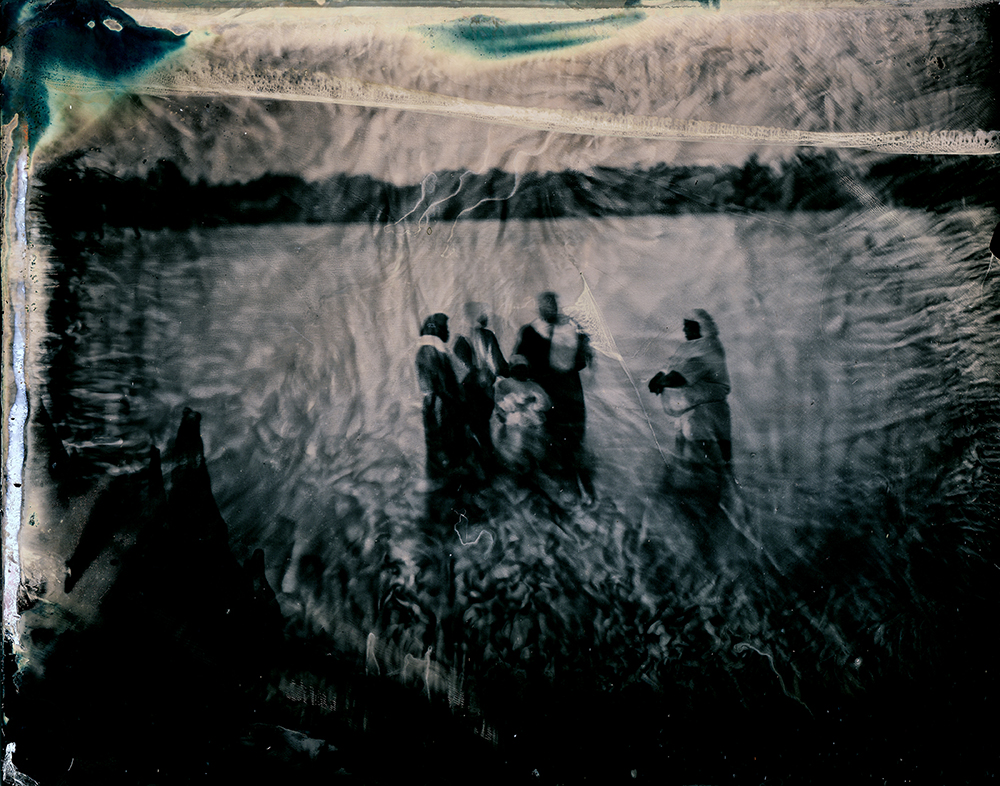
Moon Lake Baptism Day, 2010. From the Moon Lake Baptism series Coahoma County, Mississippi. Ambrotype. From the collection of Tom Rankin © Euphus Ruth
A familiar way to embrace place is through maps. William Faulkner and Lee Smith drew maps of the fictional worlds of Yoknapatawpha County and Hoot Owl Holler, in which they set their respective novels. We can similarly map the New South through the photographs in Southbound. Like Southern writers, photographers create mythic places that inspire our imagination and allow us to see the region in fresh, new ways. They build on the work of earlier photographers as they unearth both beauty and its obverse through their camera lens.
The photographers included in Southbound deepen the documentary tradition within the region. Both black-and-white and color photographs are well represented. The legacies of Evans in black-and-white and Eggleston in color photography thrive among contemporary photographers.
Like Ernest Gaines and William Christenberry, who lived outside the region yet photographed familiar worlds in Louisiana and Alabama when they returned for visits each year, some of these photographers currently have a long-distance relationship to the South. Tommy Kha grew up in Memphis and now lives in Brooklyn, McNair Evans grew up in North Carolina and lives in San Francisco, and Preston Gannaway grew up in North Carolina and lives in Oakland, California.
Other photographers in Southbound moved to the South and embraced its worlds as the focus of their work. Langdon Clay followed his wife, photographer Maude Schuyler Clay, to her ancestral home in Sumner, Mississippi, where he trains his camera on people and landscape in his adopted home.
With our map of the South in mind, we see that Appalachia is extensively and beautifully documented in Southbound. Shelby Lee Adams uses rich color in his portraits of Kentuckians in their homes. From his base in Madison County, North Carolina, Rob Amberg uses both black-and-white and color film to document his Appalachian settings. Lisa Elmaleh uses a large-format camera and the tintype process to photograph Appalachian landscapes and traditional folk musicians.
As the above mentioned photographers have documented Appalachia, multiple other photographers have done the same for the Mississippi Delta. Will Jacks focuses on Po’Monkey’s Lounge, a celebrated blues juke joint in Merigold, Mississippi. Tom Rankin captures Delta vignettes in which, for example, catfish strung on a wire await the cleaner’s knife. Euphus Ruth uses wet-plate collodion and film processes with wooden view cameras and antique and modern lenses to take black-and-white photographs of seemingly timeless scenes in the region. Born in Spain, raised in Switzerland, and now living in New York, Magdalena Solé’s New Delta Rising color series focuses on the resilience of the inhabitants of that place, where family and community are everything.
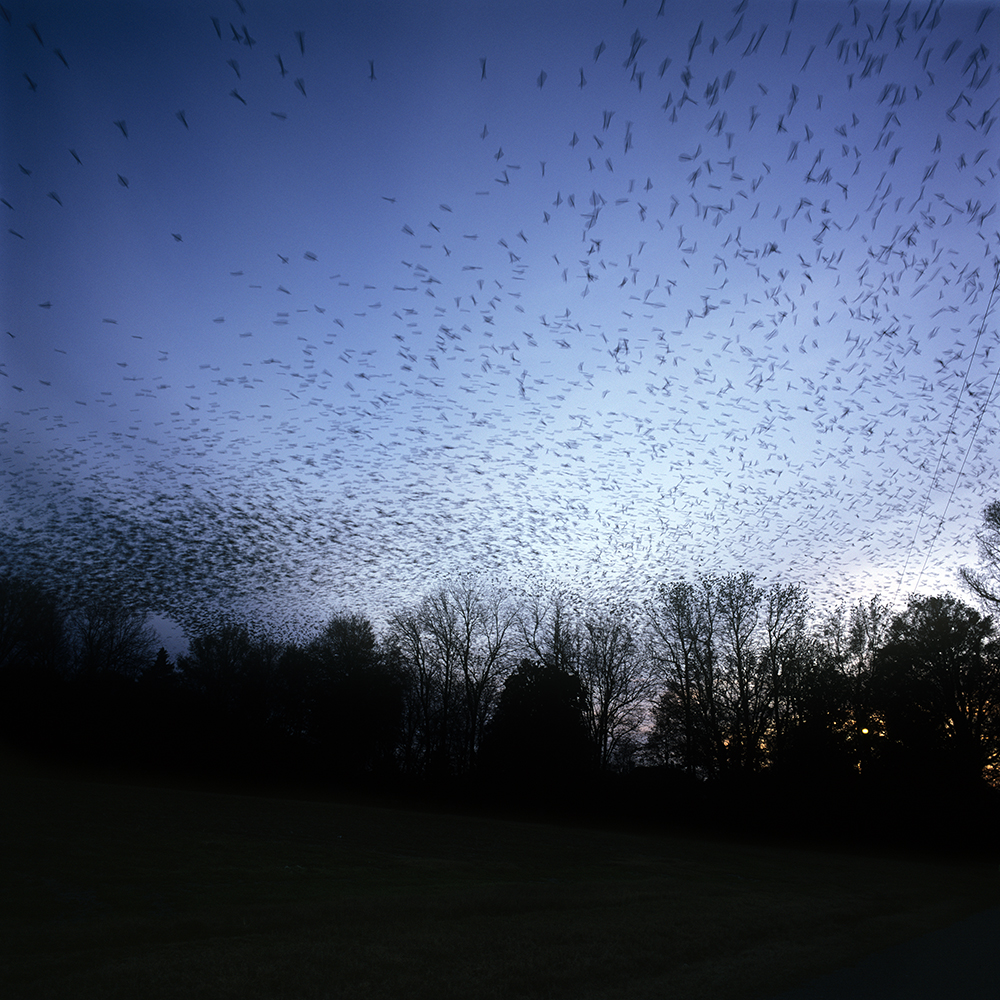
Blackbirds,2007. From the Into the Flatland series. Tallahatchie County, Mississippi © Kathleen Robbins
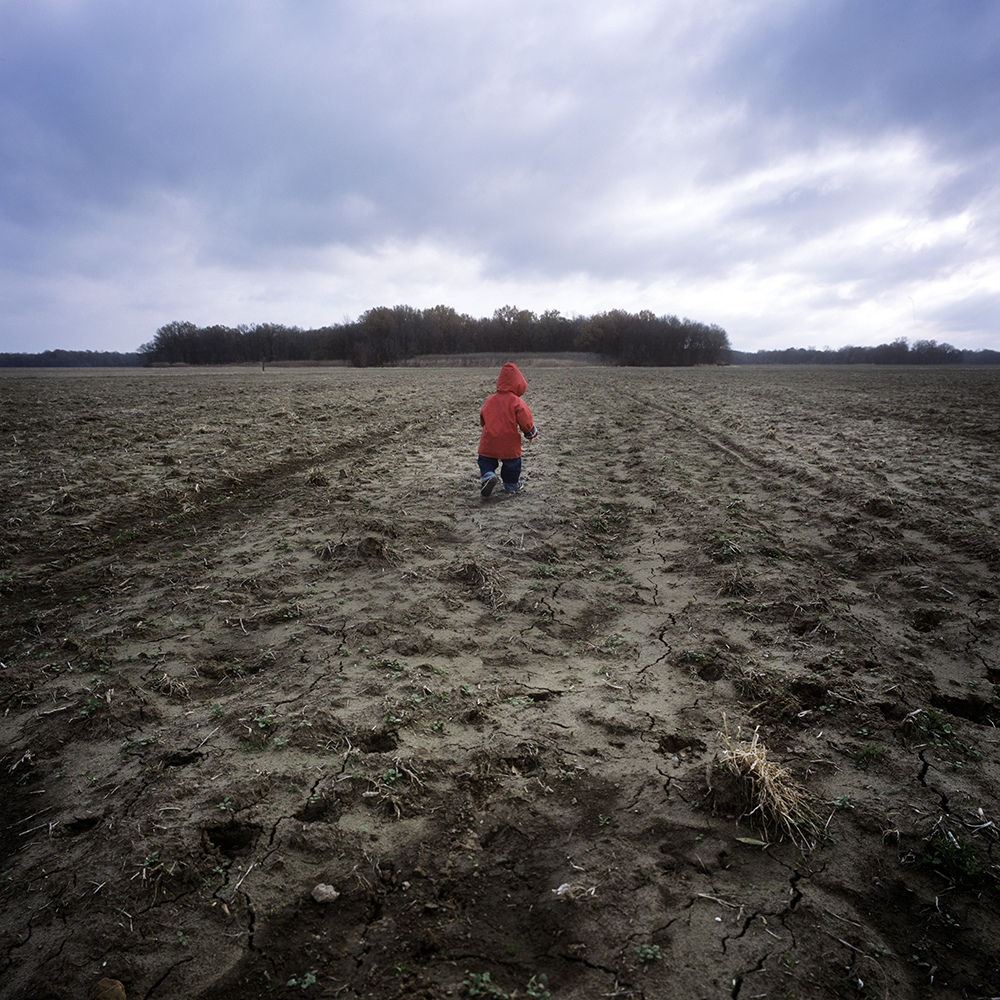
Asher on Belle Chase, 2010. From the Into the Flatland series Tallahatchie County, Mississippi © Kathleen Robbins
The state of North Carolina is well represented in Southbound. McNair Evans’s photographs are a meditation on the shuttering of his family estate, an event reminiscent of events in Godfrey Cheshire’s film Moving Midway, which is also set in North Carolina. Evans’s photographs capture a moment that forever changed his family. David Simonton has photographed in more than 365 North Carolina locations that range from large cities to small towns. His stark black-and-white photographs capture places in transition throughout the state. Still in North Carolina, Chris Sims photographed simulated Iraqi and Afghan villages where American soldiers are trained on Army bases there.
Lucinda Bunnen documents the worlds of both rural Georgia and suburban and downtown Atlanta. Both Mark Steinmetz and Sheila Pree Bright use black-and-white photographs to great effect in uncovering ways that nature and the past reverberate in this boom-town South. Atlanta-based Anderson Scott’s photographs of a Civil War reenactment, in which a white woman sits beside a large Confederate flag and a young black girl sits at her feet, remind us of how the past continues to shape the contemporary South.
Like Atlanta, New Orleans is well documented by photographers whose work is featured in Southbound. Kevin Kline offers intimate portraits of old and young, often photographed in and around his Bywater neighborhood. Keith Calhoun and Chandra McCormick have photographed the New Orleans African American community for more than three decades. Their photographs, with subjects ranging from the Tuxedo Marching Band to a Mardi Gras Indian, were printed from negatives that were damaged during Hurricane Katrina.
Daniel Beltrá and Mitch Epstein capture the Gulf Coast and the aftermath of its two recent disasters—the Deepwater Horizon oil spill and Hurricane Katrina—with haunting beauty. Beltrá’s aerial shots reveal Gulf waters illuminated with rich hues of gray, green, red, and blue that suggest the frightening extent of pollution unleashed by the Deepwater Horizon explosion. Mitch Epstein’s color images focus on how both natural and man-made energy defines the Gulf Coast and the region.
These photographs, and many more in Southbound, from Florida to Virginia and places in between, encourage us to view the South as part of a marginalized America. Fallout from industrialization and the disparity between great wealth and dire poverty are on bold display. Within these worlds white nationalism is alive and well, as Confederate flags appear on clothing and signs.
The images in this volume present many points of view, as well as familiar and unfamiliar places and dozens of interwoven themes to consider as we contemplate the New South. Represented among other relevant themes are explorations of the issues of systemic racism, immigration, violence against women, gender identity, the Black Lives Matter movement, and the state of the environment within the American South.
Each photographer presents us with a personal take on the South, one that challenges us to rethink how we see the region. Together, they offer a sanguine view, similar to Ta-Nehisi Coates’s thinking about race relations in America, “[I]f somebody, every day comes home, and beats you with a tire iron, and then, decides to stop beating you, that would be progress. It doesn’t change the fact that you are laying down on the ground bleeding. […] You say, well, I’m relieved. […] And that’s not to be congratulated. […] I think that’s how most African-Americans would greet that.”[i]
These photographers stake out their own territories in the New South, and Southbound allows us to examine the region through their rich explorations. They capture the American South at this particular moment in its history. Southbound is an anatomy of the region as seen through the faces of its people and their worlds. We look at first darkly, then face to face, at Preston Gannaway’s two African American men embracing, at Daniel Kariko’s incongruous aerial views of real estate boom and bust, and at Gillian Laub’s young woman wearing a Confederate flag tank top. These are all memorable faces of the New South, as witnessed through the eyes of these gifted photographers.
Whereas writers compose language that describes the New South, photographers capture visual moments that define the region for our eye. The images in Southbound: Photographs of and about the New South allow us to rediscover this region in powerful new ways.
[i] Ta-Nehisi Coates, “Facing the Truth: The Case for Reparations,” Interview with Bill Moyers, May 21, 2014. (http://billmoyers.com/episode/facing-the-truth-the-case-for-reparations/)
Posts on Lenscratch may not be reproduced without the permission of the Lenscratch staff and the photographer.
Recommended
-
Paccarik Orue: El MuquiDecember 9th, 2025
-
Lauri Gaffin: Moving Still: A Cinematic Life Frame-by-FrameDecember 4th, 2025
-
Dani Tranchesi: Ordinary MiraclesNovember 30th, 2025
-
Art of Documentary Photography: Elliot RossOctober 30th, 2025
-
The Art of Documentary Photography: Carol GuzyOctober 29th, 2025

